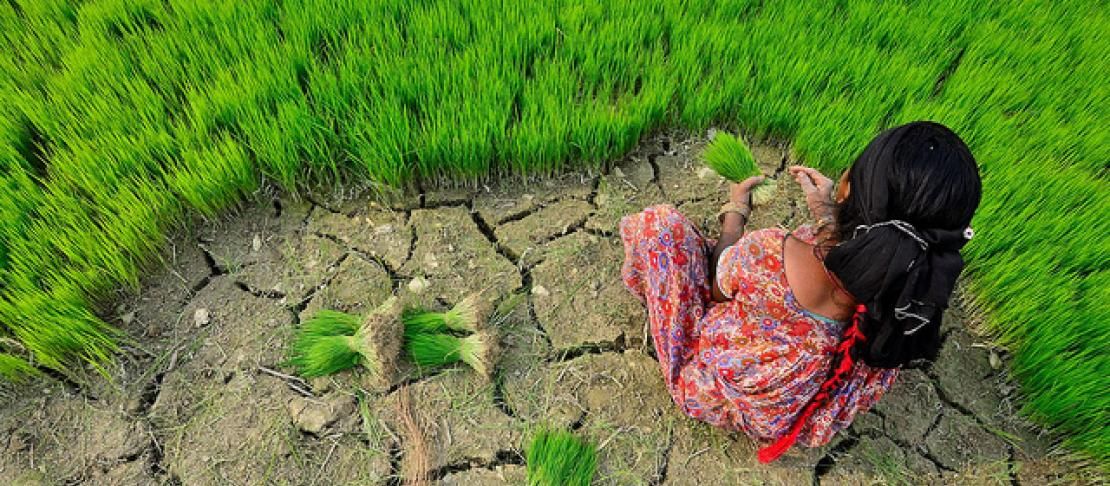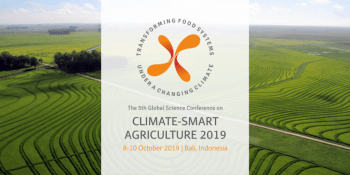El Niño predicted to create winners and losers in global agriculture

Models predict an “El Niño” climate event in the making, known to bring drought to some areas of the world and heavy rains to others—creating both winners and losers in agriculture and food security.
El Niño heats up in the Pacific
As of June 2014, climate models predict a 60% chance of an El Niño developing in northern summer, and a 75-80% chance of El Niño conditions by the end of the year.
El Niño’s impacts are far-reaching, influencing rainfall and temperature patterns across the globe. In agriculture, these impacts are felt primary through the cycle’s effect on precipitation, particularly in the developing world where 80% of farmland is rainfed. But not all impacts are bad—while some areas may suffer from drought, others enjoy above average rainfall and good harvests.
"Many people associate El Nino with a bad year, with drought and disasters. The truth is, in an El Nino year, there will be winners and losers in agriculture and food security." – Walter Baegthen, International Research Institute for Climate and Society
What is El Niño?
El Niño refers to warmer-than-normal sea surface temperatures in the eastern tropical Pacific Ocean. The term was coined by fishermen of the coast of Peru, who noticed a periodic warming that affected their catch. “El Niño” (Spanish for little boy) refers to the Christ child, as the phenomenon tended to occur around Christmas. La Niña, the opposite of El Niño, signifies periods when the eastern equatorial Pacific is cooler than usual.
El Niño and La Niña conditions affect the trade winds across the tropical Pacific region, which in turn affect the distribution of ocean temperatures. The fluctuation between El Niño, La Niña and neutral (near average sea surface temperatures) conditions is known as the El Niño-Southern Oscillation (ENSO). This back-and-forth of El Niño and La Niña, and their impact on winds across the Pacific is where the "Southern Oscillation" part of the name originates.
How does El Niño affect weather?
El Niño and La Niña influence seasonal temperature and precipitation in many parts of the world, via the effects of tropical rainfall on the upper atmosphere. Towering rainclouds tend to form over the warmer portions of the Pacific Ocean, acting as rocks in the “stream” of atmospheric flow. ENSO shifts the position of warm water and these clouds toward the east (El Niño) or west (La Niña), creating ripple effects in the atmospheric flow that reach across the planet’s surface. These atmospheric “waves” dictate the positions of the monsoons and storm tracks in higher latitudes.
Because of its far-reaching impacts (see figure below), El Niño grabs headlines around the globe. In 1997-98, a supercharged El Niño event led to drought and massive forest fires in Indonesia, destruction of infrastructure and crops from extreme flooding along the coast of Latin America, livestock and agriculture losses due to heavy rains in Eastern Africa, and epidemics of infectious disease such as Rift Valley fever and malaria associated with extreme weather and flooding in the same area.
El Niño shifts normal rainfall and temperature patterns across the globe. Although impacts vary from event to event, these are fairly consistent patterns for an El Niño year. See original.
El Niño events can last up to or longer than a year, so their effects on rainfall around the globe may persist for several seasons, and impacts on agriculture can be widespread.
How does El Nino affect agriculture?
El Niño hits many key agricultural areas across the world. For example, increased risk of drought during El Nino years can reduce yields of rainfed crops in northeastern Brazil; in the southern summer in southern Africa; and in the latter half of the year in eastern and northern Australia and southeast Asia including parts of the Philippines, Indonesia and Viet Nam. Some connection has been observed between drought in the West African Sahel, a belt of highly drought-prone farm and pastoral land tracing the bottom of the Sahara desert, and El Niño conditions. In some years, El Niño can delay or diminish the Indian summer monsoon, putting the livelihoods of hundreds of millions at risk.
But the impact of El Nino is not always negative. For example, increased rainfall tends to increase yields of rainfed annual crops in the cereal belt of northeastern Argentina, southern Brazil and Uruguay; in parts of East Africa during the October-December “short rains” season; and in Tamil Nadu state in the far south of India during the “rabi” or winter monsoon season.
What are the odds?
El Niño’s impacts are forecasted through the use of climate models and past observed conditions. Models are run many times using initial sea surface temperature conditions, allowing the “signal” of El Niño’s influence to emerge from the “noise” of individual weather events. These model runs produce a probability distribution of potential impacts, indicating the percentage chance of particular conditions. For example, a model might predict a 50% chance of above-average rainfall in East Africa under El Niño conditions, a 30% chance of normal rainfall, and a 20% chance of below normal rainfall.
With its powerful impact on the global climate system, the ENSO cycle is a major reason why scientists can make forecasts of temperature and rainfall several months ahead of time, known as the seasonal timescale. Compared with normal conditions, El Niño conditions allow scientists to make more accurate forecasts of extreme drought or rainfall for several regions of the world, offering an opportunity to better support farmers with climate information services in the upcoming seasons.
The CGIAR Research Program on Climate Change, Agriculture and Food Security (CCAFS) Theme on Climate Risk Management works to provide accessible, actionable climate information services to farmers as part of an integrated approach to climate change adaptation. With the knowledge that the season may be much drier than usual, a farmer could implement water-saving measures, or shift planting to a wetter hillside. If conditions look favourable, she could invest in higher-yielding seeds or plant a larger area.
Read more about our work in providing climate services for farmers:
Scaling up climate services in Tanzania
Traditional forecasting meets science for climate risk management
How can we help farmers better understand climate information?
This post is part of a series on El Niño’s impacts on agriculture. Check out all of our posts on El Niño.
Jim Hansen is the leader of the CCAFS Theme on Climate Risk Management, and Alexa Jay is a communications specialist with the same theme.

![El Niño shifts normal rainfall and temperature patterns across the globe [click for original]](/sites/default/files/scale/images/el%20nino%282%29-scaled.png)


